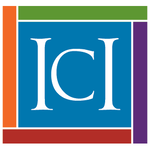What We Mean When We Talk About Inclusion
Resource Guide
Inclusion means that all people, regardless of their abilities, disabilities, or health care needs, have the right to:
- Be respected and appreciated as valuable members of their communities
- Participate in recreational activities in neighborhood settings
- Work at jobs in the community that pay a competitive wage and have careers that use their capacities to the fullest
- Attend general education classes with peers from preschool through college and continuing education
Inclusion applies to all parts of life
The Americans with Disabilities Act of 1990 mandates that people with disabilities have freedom, equality, and opportunity to participate fully in public life.
Support
People with disabilities may need support to participate fully in their communities. This support can range from alterations (called "accommodations") to make a space accessible for a person with physical or sensory limitations, to training for teachers so they can teach students of all abilities and talents, to assistance from counselors and friends to succeed in a job or a recreational activity. Support should respect the wants, needs, and choices of the person with a disability.
Support can be provided to...
- Students--to build on strengths & accommodate learning styles
- Families--to encourage involvement & mutual support
- Educators--to provide training & resources
- Employers and co-workers--to promote a work culture that welcomes all
...To ensure meaningful participation in school, work, and social community.
Inclusion is not...
- clustering people with disabilities into one home, classroom, workplace, or social center
- giving "special privileges" to people with disabilities
- feeling sorry for people with disabilities
Inclusion can look like...
- Martina, a woman with a visual impairment, sings in her church choir.
- Tyrone became interested in politics through his city's Independent Living Center (ILC), a resource center for people with disabilities. He now advocates for his own rights and teaches other people about disability rights issues.
- Esmeralda, a woman with cerebral palsy, started working in a local office after graduation, where she goes for lunch and after-work outings with her co-workers.
- Adam, who has Down syndrome, is an Eagle Scout in the Boy Scouts of America.
- Lee, an eight-year-old girl with special health care needs, attends her local elementary school, with help from her school nurse and a portable ventilator.
No one is "too disabled" to be part of their community.
